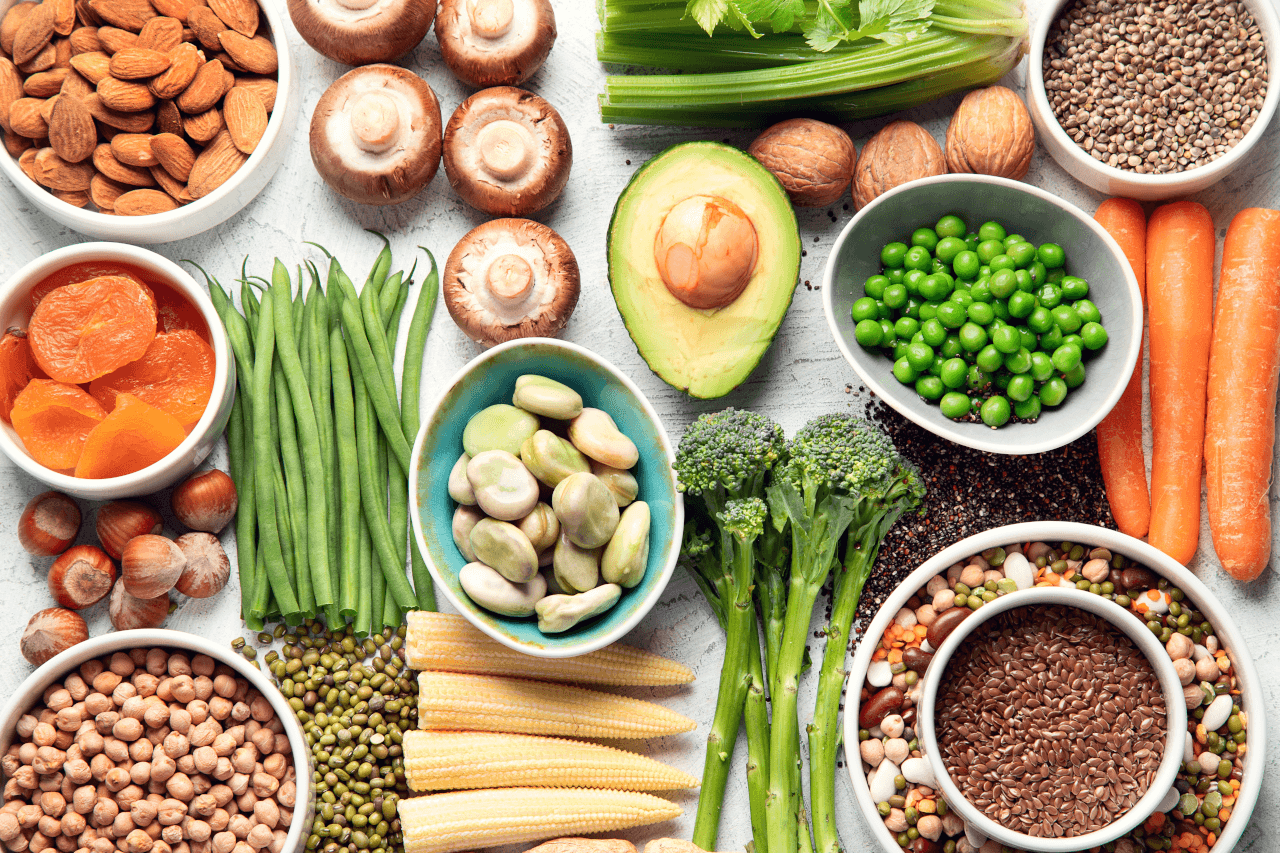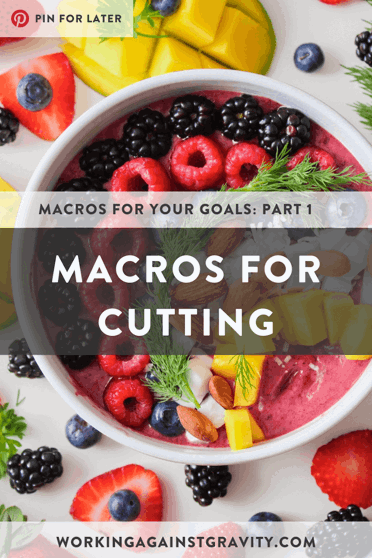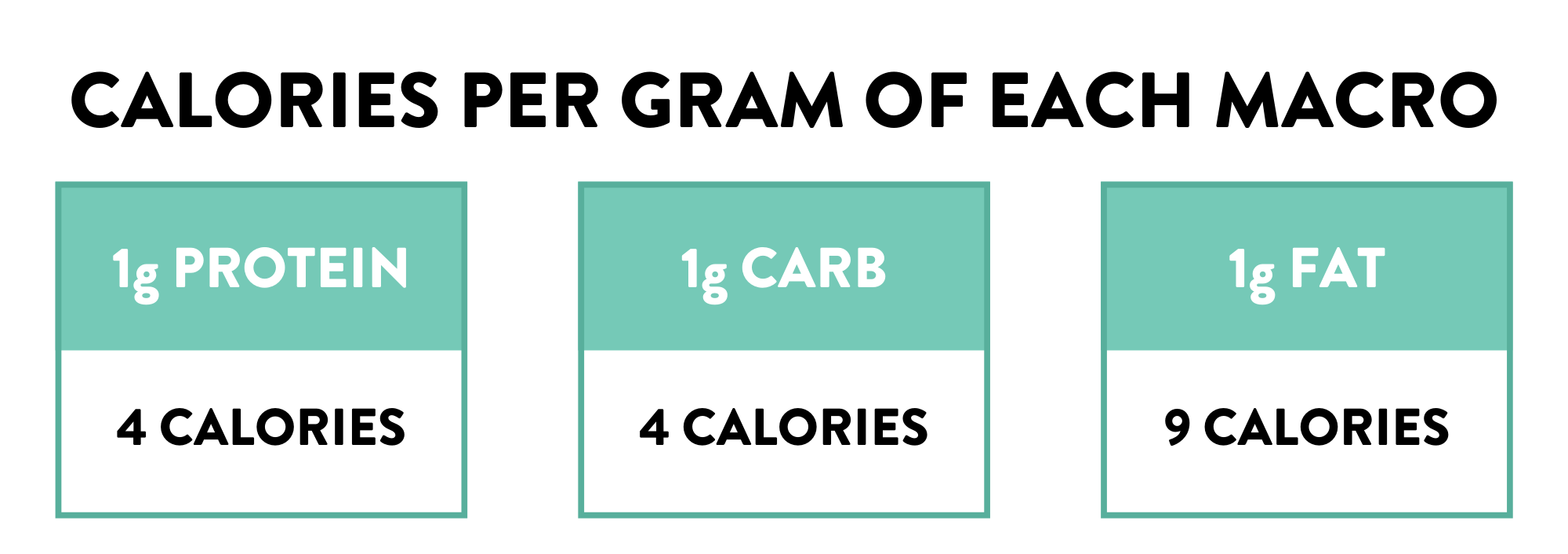
Lean. Shredded. Ripped. These are all great targets and words to put on your vision board, but what's your plan? How are you actually going to get there?

Hitting that target weight and goal physique likely requires you to learn your macros for cutting. In this article, we’re teaching you how to implement a cut into your nutrition program and the process to become the next Ryan Gosling or Gal Gadot (Wonder Woman, anyone?)... the dream, right?
What is a Cut?
A “cut” is a phase of reduced caloric intake, partnered with strength training in order to lose weight and body fat while maintaining as much lean muscle as possible.
Depending on your current weight, body composition, training style and overall goals, cutting could be pretty pain-free or it could be a longer, tougher process. Wondering if it is right for you?
Related: Should I Bulk, Cut, Reverse or Maintain?
Advertisement
Who is Cutting Good For?
Eating in a calorie deficit may put stress on your body, cause shifts in your metabolism, impact your training and recovery, and even influence your sleep patterns. It also takes a high level of dedication to stick to a cut.
Because of these effects of cutting on your mind and body, there are specific people who will see more success in a cut than others. A cut may be right for you if you:
- Have been eating at calorie maintenance or in a calorie surplus for a prolonged period of time.
- Have a significant amount of weight to lose.
- Are brand new to dieting.
- Are in a period of life where you can dedicate time, effort and energy to the foods you eat.
- Are working with a 1:1 coach who can guide you through the necessary steps to reach your body composition goals while feeling your best.
- Compete in a weight-specific sport and need to be a certain weight by a certain time.
- Have a special event coming up, want to feel leaner and more confident, and can commit to what it will take to reach that goal.
So now that you’re in the know if you’re ready for a cut, the next step is learning how to do it!
Related: The Best Way to Lower Body Fat Percentage
Calculating Macros for Cutting
The first step in finding your macros for cutting is determining your calorie deficit. Learn how to do that HERE.
Advertisement
To see the best results in a cut, you need to take it one step further: Determine and hit your macros.
What are Macros?
Calories are made up of macros. The three macros (short for macronutrients) are protein, carbohydrates and fats. There are four calories per gram of carbohydrates, four calories per gram of protein and nine calories per gram of fat.

While the amount of calories you eat generally determines your weight, the amount of macros you consume generally determines how you look and feel at that weight.
Related: WAG Nutrition Macro and Calorie Calculator
Advertisement
How Much Protein Do You Need When Cutting?
Protein is crucial if you want a leaner physique as a result of your cut. After all, when you say you want to lose weight, what you actually mean is you want to lose fat, right?
It is responsible for maintaining muscle and repairing muscle damaged during exercise. At the low end, you need at least 0.7g of protein per pound of bodyweight and 1.3g per bodyweight at the high end. A WAG Coach can help you determine the exact number that will work for your body and goals.
You can find protein primarily in meat, dairy, eggs, and meat substitutes.
Related: Easy Ways to Add More Protein to Your Day
What About Carbs and Fats?
Who doesn’t love bread, pasta and cheese? But how much non-protein nutrients do you need?
Advertisement
If you're cutting and your protein target is set, split the remainder of your calories between carbs and fats. The ratio will depend on your activity level, sex and personal preferences.
You can play around with the balance between these two macros until you've found targets that make you feel physically good and mentally happy... you don't want to hate your diet.
Unless you’re following a keto diet or much prefer fat-filled foods, fats should make up around 25-30% of your daily calories [2]. Your body NEEDS fats to maintain proper function. Since they also play a vital role in hormone health, we recommend women stay towards the higher end of the range. Incorporate some avocados and nuts/nut butters to hit your fat target.
Related: The Types of Fats You Should Eat
Last but not least: CARBS!
Carbohydrates have gotten a bad reputation in some circles. Although carbs are not "necessary" to live, they are your body's preferred source of quick energy [3]. Carbs are vital to the tough muscle-building workouts we recommend doing during a cut.
Advertisement
The amount of carbs you need depends on how big you are and how hard you work out. For example, Michael Phelps ate like he was on Man vs. Food every meal of every day because he had to fuel miles and miles of swimming.
On the flip side, if you’re a CrossFitter hitting 4-5 classes per week, your portion sizes probably won’t earn you a free shirt and $100 if finished within an hour. So, you’ll need fewer macros than that.
Fruits and veggies give you the most vitamin and mineral bang for your carb buck so we recommend starting with whole foods first. Your carb choice may also depend on your mood and what you want to prioritize in your macros. It’s chocolate chip cookies for me!!
How to Adjust Macros During a Cut
A successful cut requires tweaking as you go. You'll need to adjust your target macros as you see how they are (or aren't working).
But, what counts as "working"?
Advertisement
Progress mainly depends on how far you are from your target weight. If you are starting at a higher bodyfat percentage and have a moderate to large goal, losing 1-2lbs per week can be reasonable and attainable. If you don’t have much weight to lose, your weight loss might look like 0.5-1lbs per week... and the closer you are, the more accuracy it will require.
What to Expect During a Cut
A successful cut will take some work. If it was easy, we'd all be extras in 300. Consistency will require you to plan meals ahead of time and have some strategies to deal with hunger.
How to Deal with Hunger in a Cut
There are quite a few strategies to help you manage hunger laid out here, but a lot of it will come down to finding what works for you.
You might find that more meals, more frequently, works for you. Or, maybe fewer meals spread out helps you feel fuller. You might find that the timing of those meals makes a big difference... if you're not hungry right when you wake up, push that meal back a bit.
Here are your main priorities: hydration and food volume. If you're mistaking thirst for hunger, that will make a cut that much harder, so drink up!
Advertisement
Additionally, take note of how much food by volume you get from different sources. If you want 50g of carbs, do you want to eat a 2oz bag of Sour Patch or do you want to eat 24oz of strawberries? Which do you think will keep you feeling fuller?
Related: How to Actually Feel Full
Related: 100 Calories in 100 Ways
Will Cutting Impact Your Training?
The short answer: Yes, it can.
The longer answer: You might have to adjust the volume or intensity of your workouts if you start to notice big decreases in energy and recovery. You may also notice that you’re unable to perform at the same level as you could when you were eating more. This is when managing expectations is really helpful. During a cut, you may need to settle for maintaining gains in the gym vs. hitting PRs left and right.
Although it may seem counterintuitive, keeping calories as high as possible - while seeing your desired weight loss progress - will improve your cut. This allows you to maintain as much performance (and muscle) as possible as your weight drops. A cut that is too drastic may impact training too much and could be detrimental to building the physique you're hoping for.
Advertisement
If you’re noticing some shifts in your performance and recovery, start by playing with your meal timing. Focus your carb-heavier meals around your training to give your body the fuel it needs when it needs it most. You and your workouts are unique, so hiring a 1-on-1 coach to help with these nuances can make all the difference.
Do You Need a Diet Break During a Cut?
Being in a calorie deficit can place some stress on the body. This can happen if you’re in a deep deficit and/or if you’re in a deficit for too long. If you've been cutting for a few months and have hit a steady plateau, it could be time for a reset and give your body a break.
How to Measure Progress During a Cut
Make sure you're keeping track of progress to know whether your numbers are working. The traditional bathroom scale is a decent measure of change as it will show weight loss, but because so many things can impact that number, there are other (and often better) measures as well.
At WAG, we find the most useful measure of progress changes in weekly progress pictures. While I don't want anyone to see pictures of me in my Power Ranger skivvies, I still take them because it is easier to see fat loss visually than the weight loss shown by the scale.
With a WAG Coach, you'll have access to our coaching app, Seismic, which will show you your pictures side-by-side so you and your coach can see how things change from week to week.
Advertisement
There are many other options to track progress, and you can decide what's the most important measure to you! In short, don't just rely on the scale.
Related: Fifteen Markers of Progress
What to Do After a Weight Cut
If you've reached your target weight, it is likely time to add some calories back in... but how many and how fast?
Well, what's your next goal?
A coach can help you approach your next goal by providing custom macro numbers for you and giving you personalized feedback to keep you consistent from week to week.
Advertisement
No matter what, we suggest slow and steady. Adding a dozen donuts back in the next day might not (read: is not!) be the move. Try a slow and deliberate reverse diet with the goal of raising your metabolism (calorie burning) and maintaining your recent cutting progress.
There you have it: the basics of cutting. Eat as much as you can while losing body fat at an appropriate pace and be lean and mean in no time!
Stay tuned for PART 2 of our “Macros For Your Goals” series!
References:
- Van De Walle, G. “What Is a Calorie Deficit, and How Much of One Is Healthy?” Healthline, Healthline Media, 12 Dec. 2019, https://www.healthline.com/nutrition/calorie-deficit
- Fat and calories: The Difference & Recommended Intake. Cleveland Clinic. (n.d.). Retrieved July 9, 2022, from https://my.clevelandclinic.org/health/articles/4182-fat-and-calories#:~:text=The%20Institute%20of%20Medicine%20and,eat%202%2C000%20calories%20a%20day.
- Rodriguez, D., & Kennedy, K. R. (2019, April 29). Carbohydrates: Your Body’s Most Important Source of Fuel. EverydayHealth.Com. https://www.everydayhealth.com/diet-nutrition/101/nutrition-basics/what-about-carbohydrates.aspx
Bo Buser
Schedule a Free Intro Call
Working Against Gravity has led the macro tracking and health space for over a decade. Our team doesn’t just understand the science of nutrition—we’ve spent years mastering the art of tailoring it to fit your life. That means no cookie-cutter plans, just real strategies that have worked for over 30,000 people.
Schedule a free call with our team to learn how working with a 1-on-1 WAG coach will help you reach your goals.



